The 1753 revolution and its consequences
Naturally, the idea of having to give up the glue infuriated the Sanremesi who protested with Genoa. 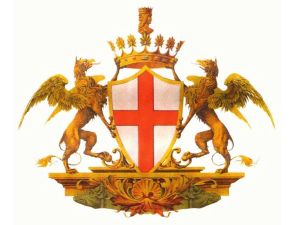
In response, the Republic sent its official cartographer, Colonel Matteo Vinzoni, to Sanremo to draw the division between the two territories. Vinzoni arrived on 6th June 1753 and for  his work he asked the help of two deputies who answered that the decision was up to the whole Parliament. During a further meeting in the presence of Governor Doria, however, a large group of people burst into the room, clamoring for the convocation of the Parliament.
his work he asked the help of two deputies who answered that the decision was up to the whole Parliament. During a further meeting in the presence of Governor Doria, however, a large group of people burst into the room, clamoring for the convocation of the Parliament.
What sparked off the revolt, however, was the inconsistent intervention of armed soldiers and an arquebus shot fired from the Commissioner's Palace. At that point the people of the group, angry, arrested and put Vinzoni, Doria and his family in prison, calling the whole population together with the ringing of the bell of S.Siro and asking for the convocation of the Parliament.
The crowd rushed to "San Romolo" and "Savoia". 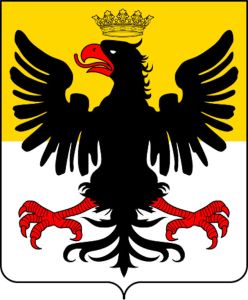 The Parliament, summoned to the church of San Germano on 7th June, decided to send three noble plenipotentiaries and a notary public to Turin to plead for the protection of the King of Sardinia. The city, in anticipation of a Genoese retaliation, reorganised itself militarily by appointing a War Magistrate and gathering men and equipping them with the weapons purchased for the purpose.
The Parliament, summoned to the church of San Germano on 7th June, decided to send three noble plenipotentiaries and a notary public to Turin to plead for the protection of the King of Sardinia. The city, in anticipation of a Genoese retaliation, reorganised itself militarily by appointing a War Magistrate and gathering men and equipping them with the weapons purchased for the purpose.
Unfortunately, the Republic's reaction was not long in coming and went far beyond the worst expectations. 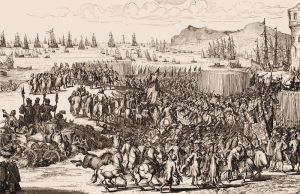 Since most of the coastal cities of the West did not adhere to the Sanremo initiative, first of all he had all the citizens of Sanremo scattered in the region
Since most of the coastal cities of the West did not adhere to the Sanremo initiative, first of all he had all the citizens of Sanremo scattered in the region 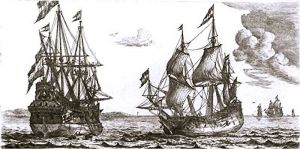 arrested and imprisoned, then on the 13th of June, in the morning he sent three galleys and a small ship for a total of about a thousand armed men, half of whom were Corsicans.
arrested and imprisoned, then on the 13th of June, in the morning he sent three galleys and a small ship for a total of about a thousand armed men, half of whom were Corsicans.
The commander was General Agostino Pinelli who, naturally, first asked for the prisoners to be freed, but he refused, so he began to cannonade the city for the whole day and the following morning.
Then at dawn on the 14th the soldiers started to disembark at two points, one part in the Pietralunga area and the Corsi at Capo Nero where they received reinforcements from the armed forces of the Colla.  The city was surrounded, but when a group of soldiers showed up in front of the Capuchin Gate, they were greeted by cannon shots that caused them to retreat. Unfortunately the Sanremo soldiers were disorganised, without a precise command and plan, so they preferred to retreat within the city walls, leaving the strategic parts of the city to the Genoese.
The city was surrounded, but when a group of soldiers showed up in front of the Capuchin Gate, they were greeted by cannon shots that caused them to retreat. Unfortunately the Sanremo soldiers were disorganised, without a precise command and plan, so they preferred to retreat within the city walls, leaving the strategic parts of the city to the Genoese.
In the meantime the Corsican soldiers had occupied the convent of the Nicolites (the present Don Orione) on the hill above the Pigna, abandoned by the defenders and therefore without having fired a single shot.
Pinelli, seeing that the situation turned in his favour, with the mediation of the Nicoliti fathers Balbi and Curlo, skilfully tried to propose an agreement. The insurgents would have to free the prisoners and lay down their weapons; General Pinelli promised « that life, honour and robba (of the people of Sanremo) could hope for the clemency of the Most Serene Throne ». He would also have done « every work to settle the matter and mitigate the punishment ». Father Balbi gave written confirmation on these proposals. Pinelli, if not, threatened to resume hostilities « until the last extermination ».
The people of Sanremo, rather undecided on what to do and disorganised, naively accepted the agreement, trusting the word of the Jesuits, and transmitted the following message: « The people are ready to comply with what Mr. Comm.rio Gen.le dessiders; he begs him, however, for the security of obtaining from the Throne Sergeant the life, honour, and the robbery with the general indulgence ».
(On the sidelines of this, given how things went, it was common to say that the Nicoliti were traitors, causing a strong aversion to them in later times). The general and his troops entered the city calmly and for the first few days things remained calm. According to Pinelli's plan, however, on 16th June the arrests and imprisonments of all those involved in the rebellion began, so much so that, when the prisons were full, the ones in Palazzo Borea, where the Genoese command was located, had to be used as well. Pinelli's reprisal, by order of the Republic and going even further, was terrible.
The general and his troops entered the city calmly and for the first few days things remained calm. According to Pinelli's plan, however, on 16th June the arrests and imprisonments of all those involved in the rebellion began, so much so that, when the prisons were full, the ones in Palazzo Borea, where the Genoese command was located, had to be used as well. Pinelli's reprisal, by order of the Republic and going even further, was terrible.
He obliged the Council on the same day to sign the payment of 50,000 lire immediately and another 50,000 after two days, and imprisoned the same councillors (some of whom were released on 4th July).
The sum was paid on 19th June but the general imposed another payment of 100,000 lire, a sum that at that time was very high and impossible to find in a short time, so it was proposed in his place, the delivery of 980 barrels of oil and a considerable quantity of lemons.  On his own initiative, he demanded 30,000 lire annually as "refreshments for the troops".
On his own initiative, he demanded 30,000 lire annually as "refreshments for the troops".
He continued with confiscations of property, kidnappings and further arrests, reducing the city to a state of complete degradation and impoverishment, forcing some citizens to flee and seek asylum in the territories of the Kingdom of Sardinia. 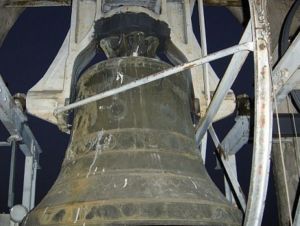 The existing Statutes were abolished and, out of public contempt, the San Siro bell was dismantled, guilty of having stirred up the
The existing Statutes were abolished and, out of public contempt, the San Siro bell was dismantled, guilty of having stirred up the 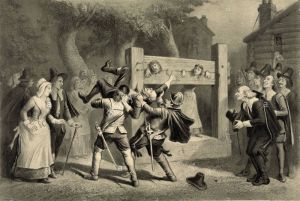 crowd (which was brought to Genoa together with the barrels of oil and lemons on 7th July), then the upper part of the bell tower of the same church and the Municipal Archives brought to Genoa were demolished.
crowd (which was brought to Genoa together with the barrels of oil and lemons on 7th July), then the upper part of the bell tower of the same church and the Municipal Archives brought to Genoa were demolished.
Finished with San Remo, it was the time for the hamlets of Verezzo and Poggio to receive the same treatment of looting and robbery in money.
The people arrested were summarily tried and sentenced. For four of them it was death by cutting off their heads that was the public display of their heads, the counsellors were sent to exile, others were sentenced to ten years in prison or simple corporal punishment.
These abuses and harassments, however, did not go completely unnoticed in European diplomacy, so much so as to arouse the particular interest and the first interventions of the Empire. Under this pressure, Genoa issued a general pardon decree on 4th September, except for the 14 people most involved, some of whom remained in prison until almost their death and the exiles who never returned to the city.
Pinelli's questionable behaviour, his stealing and harassment were reported to the Senate of the Republic, which secretly sent investigators to ascertain the accusations. These accusations were confirmed in full, for extortion, abuse of women and other vileness, so much so that he was recalled to Genoa, put on trial and then forced to resign from office.
In his place, F.Maria Sauli was sent in, but she caused not relief but a fear of further reprisals that led to the flight of other citizens.
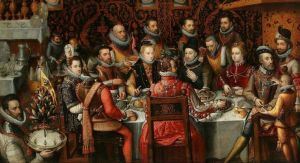 I
I n the meantime the representative of the City at the Imperial Court, Gio Battista Sardi officially asked for a proxy to continue his action. The exiled, refugees in Perinaldo drew up two documents, which was signed by almost all the citizens of Sanremo, who went in groups and secretly to the nearby town, to the home of the notaries Croesi and Cassini. The Sauli, informed of the manoeuvre, resumed the long chain of arrests by imprisoning the signatories and had the mountain passes leading to Perinaldo guarded by armed men. Then he revolted vehemently against the clergy, refusing the priests and the bishop the primacy of the chair and honours in the church, which he demanded for himself, and proceeded to other arrests.
n the meantime the representative of the City at the Imperial Court, Gio Battista Sardi officially asked for a proxy to continue his action. The exiled, refugees in Perinaldo drew up two documents, which was signed by almost all the citizens of Sanremo, who went in groups and secretly to the nearby town, to the home of the notaries Croesi and Cassini. The Sauli, informed of the manoeuvre, resumed the long chain of arrests by imprisoning the signatories and had the mountain passes leading to Perinaldo guarded by armed men. Then he revolted vehemently against the clergy, refusing the priests and the bishop the primacy of the chair and honours in the church, which he demanded for himself, and proceeded to other arrests.
At the end of November 1753, due to the continuous imprisonment and escape of the suspects, the city was to be considered almost abandoned, inhabited only by women, old people and children, subjected to all kinds of violence. Although the pardon was renewed on 4 March 1754, the exiles did not return at all. The imperial authorities, although aware of the situation, had no intention of going against Genoa, and their proclamations together with the papal ones urged by the Bishop of Albenga for the offenses received, did not prevent it from continuing undaunted, through the Sauli, to subjugate Sanremo. The same issued a proclamation stating that the city was full of debts and therefore taxes were further increased, increasing the oppression on the already decimated and starving city.
Before returning to Genoa, the Sauli imposed the construction of a fort on the sea in order to "keep" the citizens properly. He had already had the Castle on the top of the hill of the Coast razed to the ground, and had an entire district in the Pian di Nave area demolished to leave space for the new building. After the laying of the first stone by his successor, Gaetano Doria, on 6th July 1755 the fort was ready the following year, it was occupied by a garrison of 40 armed and the cannons pointed towards the city.
 In the meantime, the cartographer Colonel Matteo Vinzoni had regularly finished the city plan and the new borders with Coldirodi, while the new cadastre required by Genoa for new taxes was going slower. He was called upon several times for this, almost as if he were conniving with the people of Sanremo, so much so that
In the meantime, the cartographer Colonel Matteo Vinzoni had regularly finished the city plan and the new borders with Coldirodi, while the new cadastre required by Genoa for new taxes was going slower. He was called upon several times for this, almost as if he were conniving with the people of Sanremo, so much so that 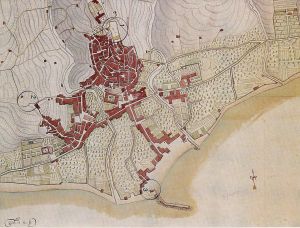 Sauli himself wrote about him: « The attachment to this country, and perhaps the feelings that are not dissimilar, are the reason that hold him back, and it is better to detach him from it ». In fact, the land registry was only completed in 1756 and was so complicated that the new taxation became problematic. Vinzoni also drew a view of the San Romolo hermitage overlooked by the compromising phrase 'Sanctus Romulus semper propugnator' and habitually frequented families in San Remo known for their hostility to Genoa.
Sauli himself wrote about him: « The attachment to this country, and perhaps the feelings that are not dissimilar, are the reason that hold him back, and it is better to detach him from it ». In fact, the land registry was only completed in 1756 and was so complicated that the new taxation became problematic. Vinzoni also drew a view of the San Romolo hermitage overlooked by the compromising phrase 'Sanctus Romulus semper propugnator' and habitually frequented families in San Remo known for their hostility to Genoa.
Meanwhile, G.B.Sardi's diplomatic actions and appeals in Vienna, thanks to the publication of volumes and manuscripts aimed at demonstrating San Remo's rights against Genoa's arrogance, continued unabated, soliciting the imperial interest that caused some problems for the Republic but this did not go beyond expressions of principle and formal solidarity.
An unexpected help came from the new Empress, Maria Theresa of Austria, who offered herself as an intermediary in the complex resolution of the matter. After an Imperial decree with the Sovereign's formal request, Genoa reluctantly agreed to grant pardon to the exiles, the restitution of the seized property, the restoration of the Municipal Statutes, the return  of the Archives and the bell removed, as well as the waiver of the annual tax of 30,000 lire.
of the Archives and the bell removed, as well as the waiver of the annual tax of 30,000 lire.
These good intentions remained only on paper, however, because the Empress, having much bigger problems with France and Spain, defected, so of all that 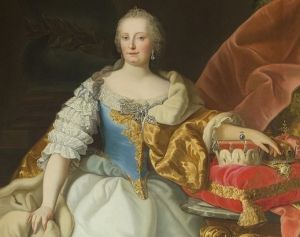 was promised, Genoa simply forgave the exiles and returned a bell (which had been torn into pieces out of contempt), which was not the original one, since it was in the Cathedral of San Lorenzo and forgot about the rest.
was promised, Genoa simply forgave the exiles and returned a bell (which had been torn into pieces out of contempt), which was not the original one, since it was in the Cathedral of San Lorenzo and forgot about the rest.
In practice, the city of Sanremo was abandoned to its fate and the twenty years of Sardi's commitment did not bring any practical benefit. He himself wrote to his friends of San Remo in 1772: « From here you cannot hope for any other measure, because for two years the course of justice for the interests of France and Spain has been suspended ».
This well-deserving citizen died in Vienna on 25 May 1776, after having spent all his possessions and life for his San Remo.
Most of the people who had fled from San Remo found refuge in Perinaldo but always remained under threats of assassination or reprisal. Others fled to different cities, to Pigna, Turin, Trieste, and even to Marseille and Nice.
All of them never lacked the support of the citizens who remained with remittances of money collected mainly from the parish churches, in the form of obolis for the poor of the Church. The only positive thing for the city was the initiative of commissioner Carrega for the repairs of the port which, having been damaged and abandoned since the beginning of the events of 1753, were started in 1782 and finished in 1786.
For the rest, the people of Sanremo had to resign themselves to the arrogant Genoese domination, which would only cease in 1815, with the annexation of Liguria to the Kingdom of Sardinia.
(Sources: from the book "Sanremo, heart and soul of a City" op.cit.; private and web images)




